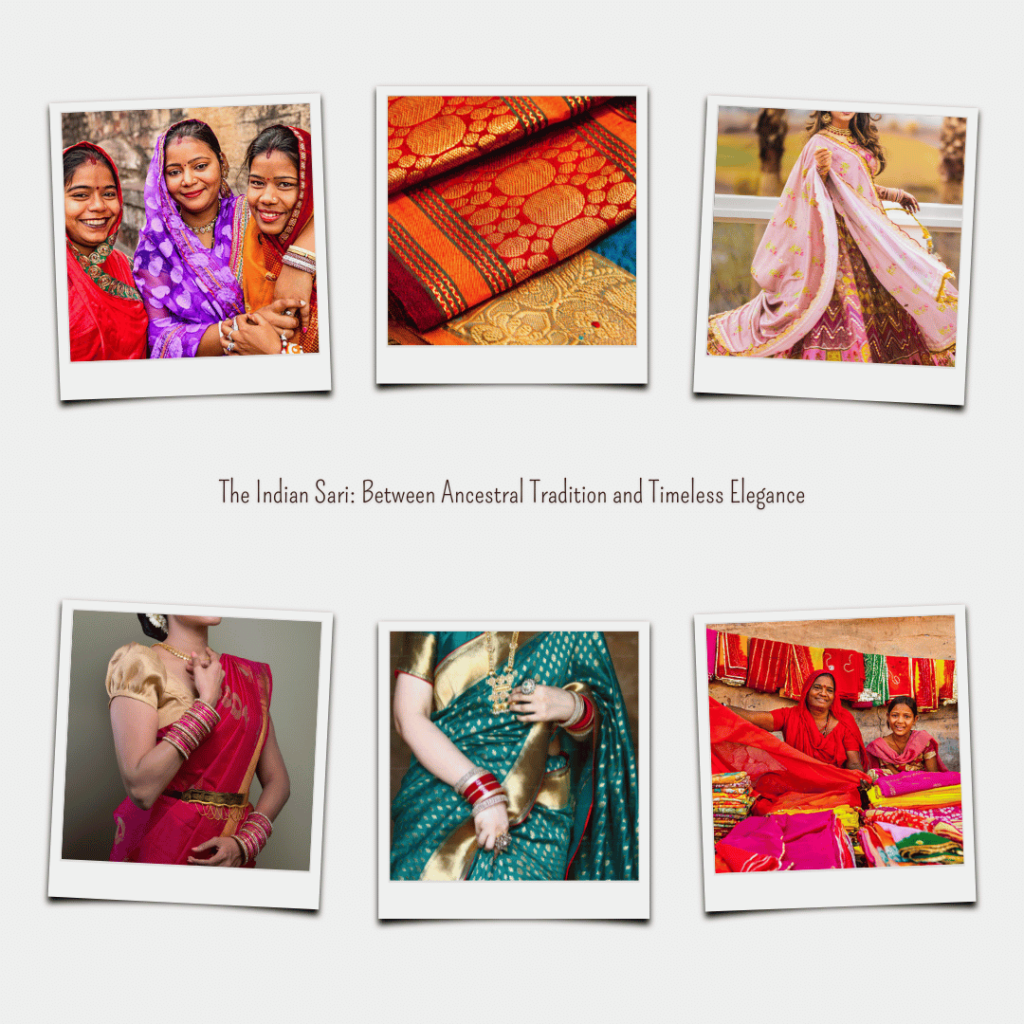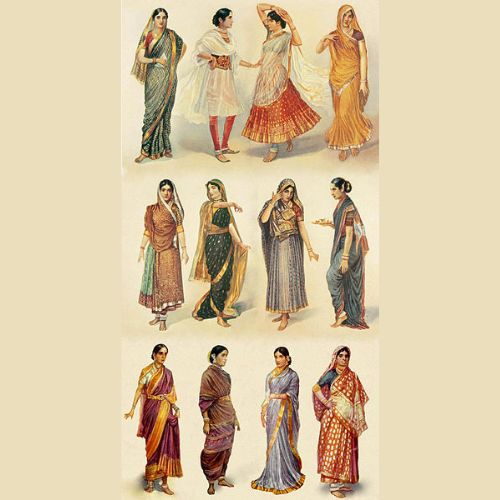The Indian Sari: Between Ancestral Tradition and Timeless Elegance
The sari, a quintessential symbol of Indian culture, is a traditional garment worn by women across the Indian subcontinent. This long piece of fabric, typically measuring between 5 to 9 meters, is elegantly draped around the body, enhancing the silhouette while providing both comfort and modesty.
Dating back over 5,000 years, the sari embodies not just cultural heritage but also a timeless expression of femininity. Each region in India showcases its own distinct draping techniques, fabrics, patterns, and colors, reflecting the country’s rich cultural diversity.
Saris are made from a variety of materials, ranging from lightweight cotton for daily wear to luxurious silk for special occasions, including brocades adorned with gold threads for ceremonial events. The designs are diverse, showcasing intricate embroidery, floral patterns, and traditional motifs like paisleys and mandalas.
With more than 80 different draping styles, the Nivi style from Andhra Pradesh and the Bengali style are among the most popular. Other variations, such as the Maharashtrian sari, include unique features like a front pleat for added comfort.
The sari is suitable for a multitude of occasions, including weddings, festivals, religious ceremonies, and everyday life. The colors of the sari often carry significant meanings: red is associated with bridal wear, white signifies mourning, and vibrant shades are linked to celebrations.
In addition to its traditional significance, the sari continues to inspire fashion designers around the globe. Contemporary adaptations and modern styles are being explored while honoring its heritage.
Ultimately, the Indian sari transcends being merely clothing; it embodies a living art form, celebrates femininity, and stands as a testament to India‘s rich history and cultural diversity.









